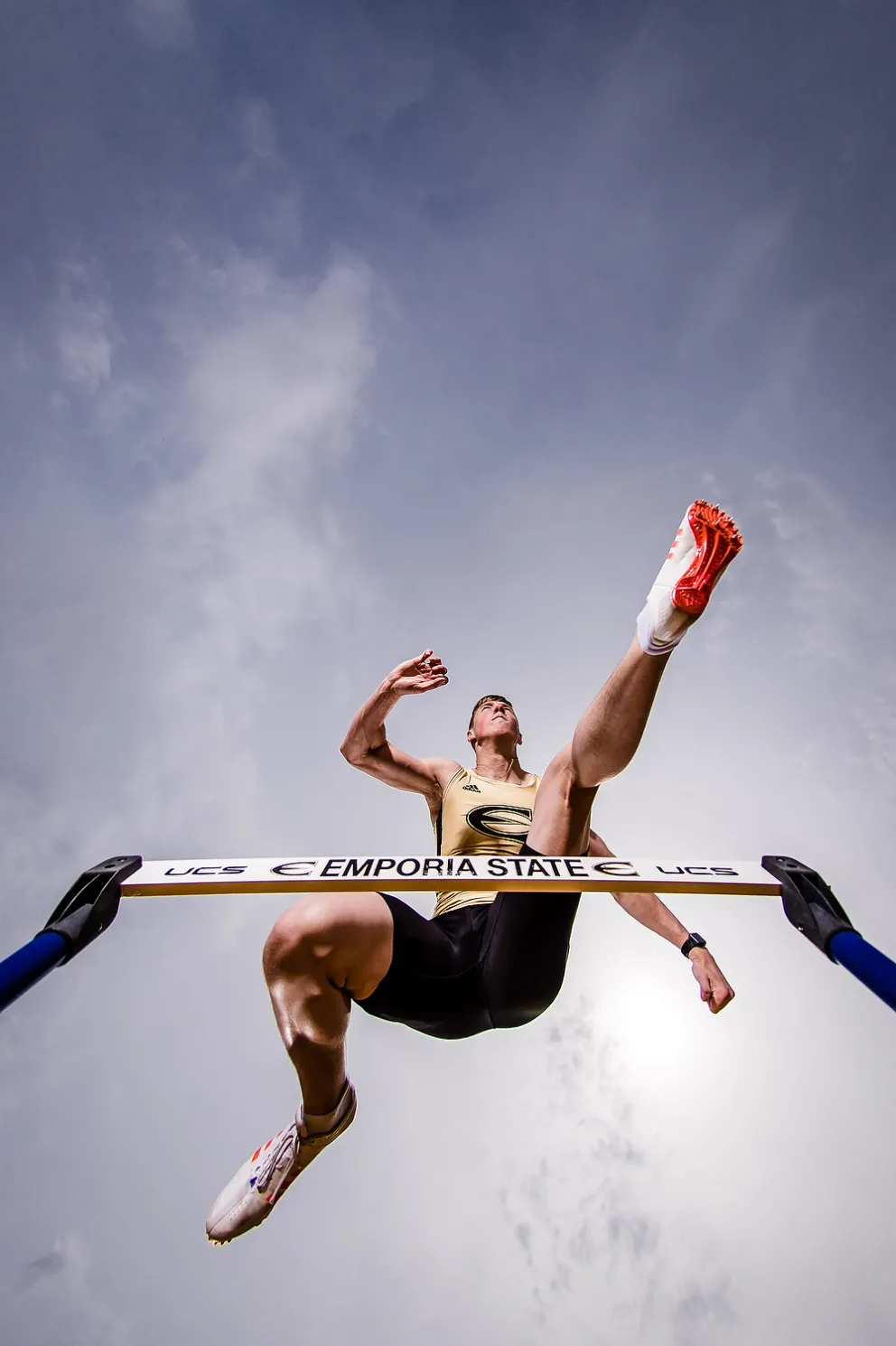
(photos by Dustin Michelson) Dustin Michelson has been University Photographer at Emporia State University in Kansas since 2015. His sports feature category image "Track Senior Action Portrait 2" (okay, so it's more of a slug than a title...) was voted "Best in Show" in the April 2019 Monthly Image Competition.
Quick tech stuff—camera model, focal length, exposure data, lighting used (if any):
•Camera: Nikon D850
•Lens: AF DX Fisheye-NIKKOR 10.5mm f/2.8G ED
•Exposure: f/3.5 1/8000th ISO 100
•Lighting: 3 Profoto B1X (key, rim, fill)
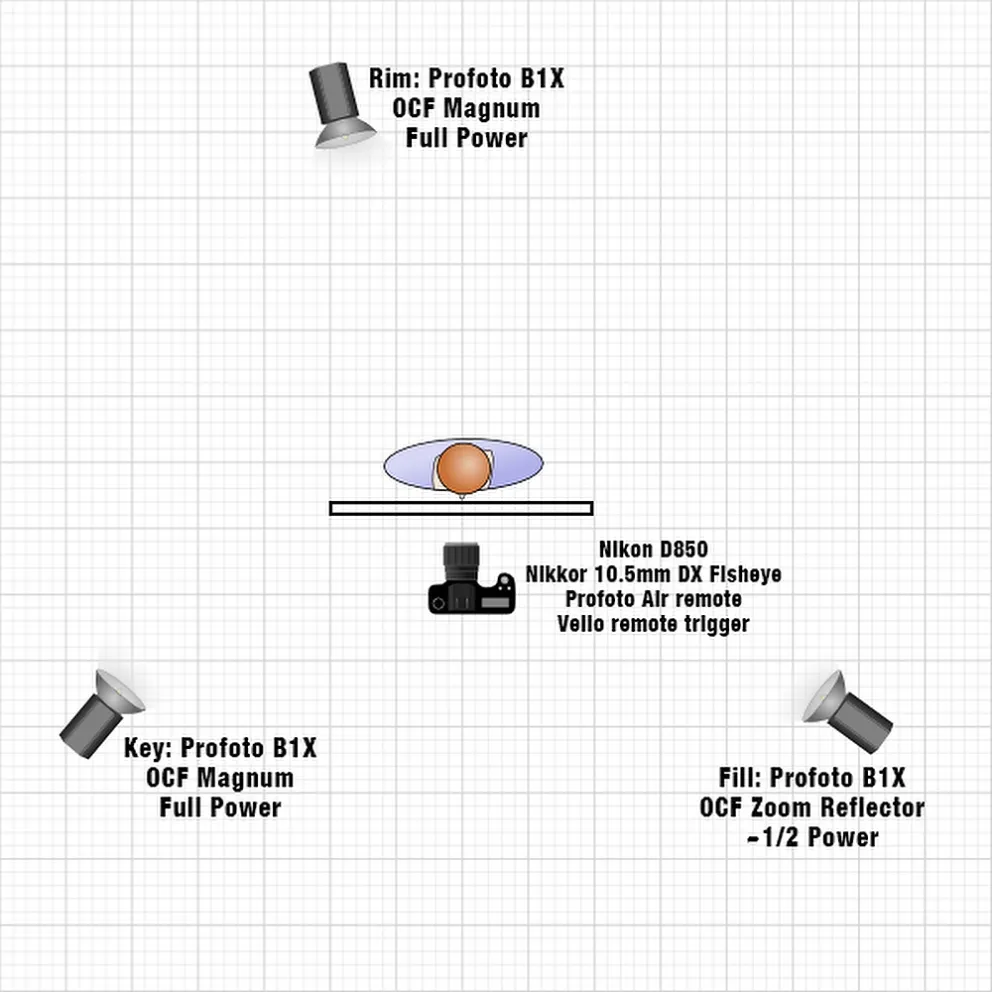
Briefly go through the process: How did the job land on your calendar? Any unique logistics in making the photo? What sort of post processing (or not)?
This shot of sophomore track & field athlete Tanner Raubenstine was actually part of a larger set of athlete portrait shoots I did this spring. Since our photo department is based in marketing, and myself and two student photographers handle photo needs for the whole campus, I’m limited on how much time we can spend on athletics each year. This year, we had already done uniform photo shoots for football, baseball, softball, basketball, and volleyball, but in the spring they also requested portraits of each senior athlete from sports we didn’t already shoot in studio for use in their senior athletics awards. I saw it as an opportunity to also take some action portraits that we usually don’t have time to do. We decided to also add in some of the standout athletes in addition to seniors, so we could have some extra photos to work with for marketing.
Between our photo calendar, athlete availability, and spring weather in Kansas, we had two 2-hour windows that worked for the track & field team during their afternoon practices on back-to-back days. I scheduled it to shoot the 15 male athletes on one day and 14 female athletes on the other, with the goal of doing a standing pose for each athlete followed by some action portraits of them depending on their event. Knowing that we had two hours with each group, with a little room to go over, I created mood/idea boards based on a large Pinterest board that I keep for sport portrait ideas, and created a timeline of the shoot so that my student photographers could help keep me on track with timing. On the days of the shoots, we mostly were able to stay on schedule, with some rearranging of the action portraits based on students who needed to leave for classes.
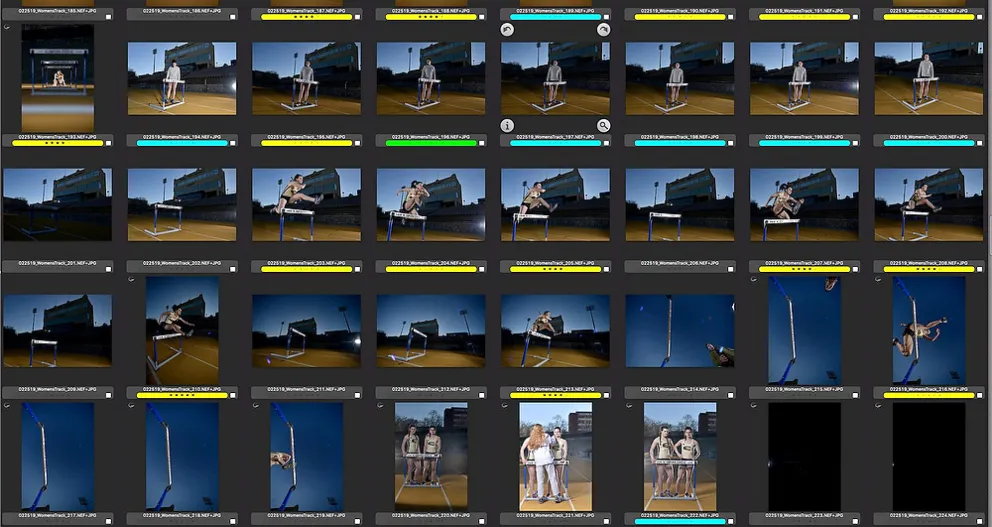
A contact sheet from Dustin's shoot with the women athletes, including in the bottom two rows his first attempts at the hurdle photo with the 14mm lens.
This hurdle shot from below is an idea I had seen elsewhere and wanted to try it out if we had a chance. The first day of the shoot was with the women, and I tried the shot with my 14mm f/2.8, but once I had a chance to see it on the computer, the angle wasn’t right and it wasn’t wide enough. On the second day, when we were with the men, we had to adjust some of the action portraits, and we ended up not doing hurdles, so I scheduled an additional shoot with Tanner a couple days later to just focus on hurdles. I already had the lighting figured out and was able to take a bit longer to get this shot right. I knew that the 10.5mm fisheye appears a little wider when the distortion is corrected in Lightroom, even though it puts the camera into DX mode, so used that lens instead of the 14mm. We had Tanner stand behind the hurdle and pre-focused on his hand at about the height he would be when jumping over, so it was just up to me to get the timing. With two of the B1Xs at full power, I couldn’t shoot continuous and get the exposure I wanted after the first shot, so we just did a single photo with each jump. Got the shot on the 4th jump, with two more just to see if we got something better, then moved on to the next pose.
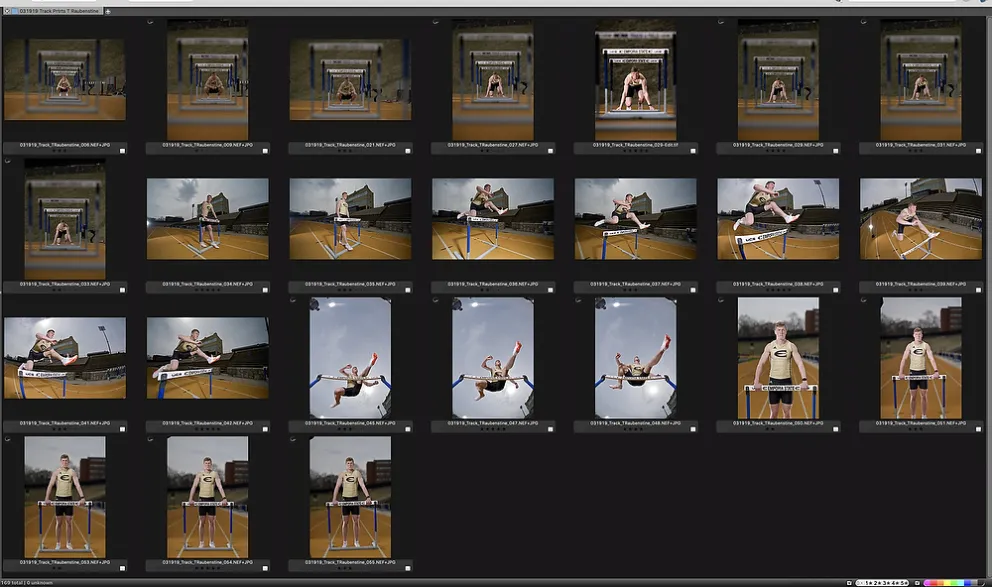
Contact sheet of the shoot with Tanner Raubenstine
Post processing in Lightroom was simple, just standard color, contrast, and exposure. I thought I might need to remove part of the press box from the image, but with the lens correction profile in LR, I was able to use the full image with only sky in the background.
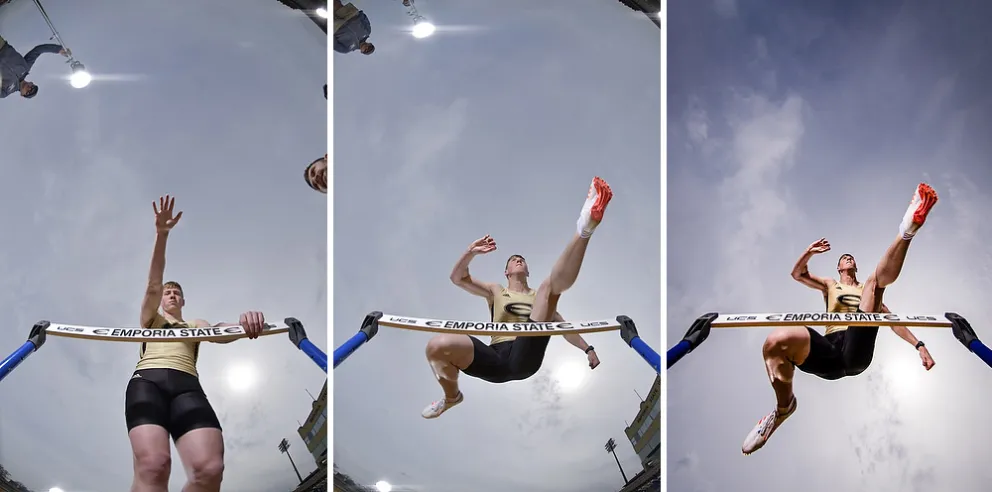
From left-to-right: Tanner helps set focus, the chosen image straight-from-camera, and after profile correction and processing in Lightroom
What (if anything) would you do differently if you could re-shoot this today?
I don’t know that I would do much different as far as technical details. Probably the biggest thing would have been to work a bit on the timing of the shot. The frame after this one had a little better placement of Tanner over the hurdle, but when I was choosing between the two, I thought the angle of his back leg behind the hurdle made this one worked better overall. As always, if we only had more time for each shot, we could find ways to make it better.
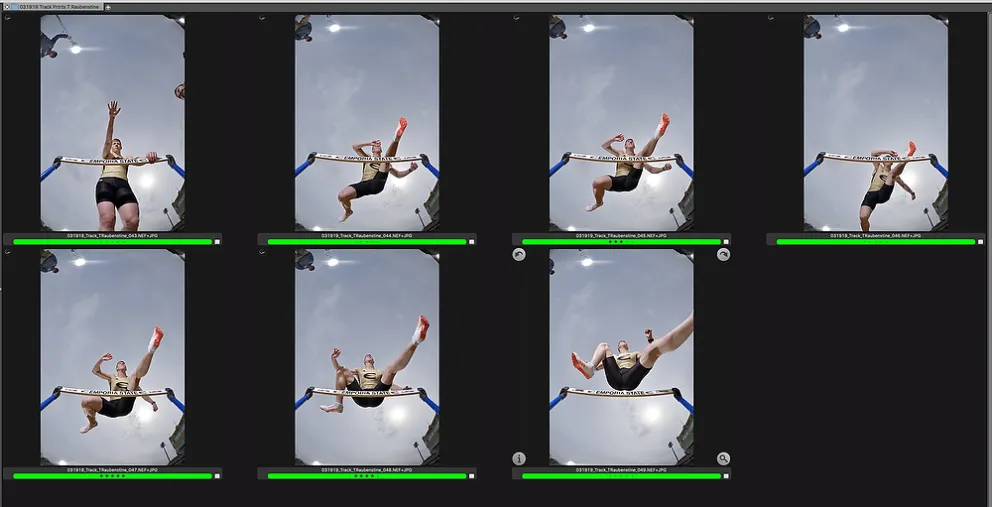
A closer look at the contact sheet
Where do you look for inspiration, feedback and motivation?
I try to pull inspiration from a variety of places, mostly so that I don’t feel like my photography is becoming repetitious or derivative of other photography. I worked as a photojournalist previously and enjoy looking at work from photojournalists and documentary photographers, past and present, like those with Nat Geo and Magnum. I also have always been drawn to more artistic or conceptual photographers like Edward Burtynsky and Gregory Crewdson.
Lately, the UPAA MIC has been the most helpful source of inspiration and motivation for photography within our marketing department. I share links to the MIC winners with people the office often, and when we have a project where we are at a loss for ideas, our art director and I will look through to see if there’s anything that triggers an idea. I’m pretty bad about remembering to get photos entered by the deadline (it’s on my calendar with multiple alerts now), but that also provides a valuable source of feedback because of the unique nature and challenges of what we do as university photographers.
What would your dream assignment be?
I look at this in two different ways, one in my current role as the university photographer, and the other as an overall dream assignment. Within the scope of my current job at Emporia State, one of the stories I’ve always wanted to do is to document a group of students for a full year with full access to show the behind-the-scenes moments. What comes to mind first is an athletic team like football or basketball, but I could also see it being as interesting if it were a relatively unknown student organization or club. The idea is that what we often see of each other on campus or during an event is only a small slice of the actual experience for each person. There are so many diverse underlying stories that shape each individual student, faculty member, coach, and staff, that it would be awesome to get a glimpse into some of those.
Overall dream assignment? Too many to really list them all, but it would most definitely be to travel to Mexico, or Central or South America to document cultural, environmental and social changes due to urbanization, globalization, land use changes, and wildlife habitat loss. My undergrad education was in environmental studies, focusing on public policy, and I’m currently finishing up my master’s in biology, focusing on ecology & biodiversity, so I’m very much interested in the intersection of people and the environment. I’ve always been fascinated with the cultural history in those areas, and there are so many important stories that could be told through photos in those areas.
________________________________
“What do you call it when a dinosaur crashes his car? Tyrannosaurus Wrecks.” Blog stories/ideas/comments welcome any time. I wanna know what you like and I especially wanna know what you don't! Email editor Matt Cashore at mcashore@nd.edu